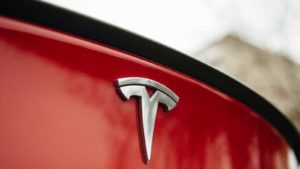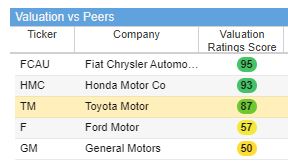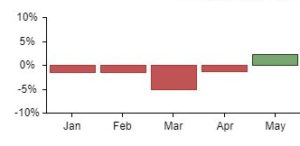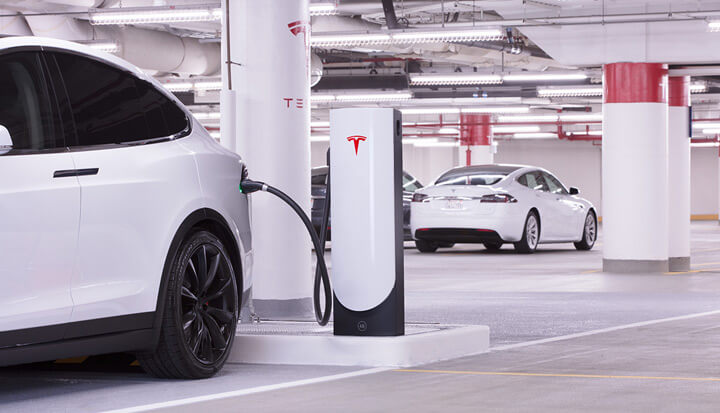Read The Full Article On: Investorplace
Electric vehicle stocks had an outstanding run this year — and they have more room to grow in the new year

Editor’s note: “7 Electric Vehicle Stocks That Could Be Your Joyride into 2021” was previously published in November 2020. It has since been updated to include the most relevant information available.
Investors who held onto electric vehicle (EV) stocks this year fared very well. Returns on pure-play EV companies ranged from fivefold to over 20 times. By comparison, the internal combustion engine (ICE) companies returned almost nothing at best and small losses at worst.
As the tectonic shift from ICE to EV continues into 2021, investors will want to stay invested in both sectors. Traditional car companies will not offer the same growth as EV firms but they, too, are pivoting.
What’s more, deciding how much to allocate in ICE versus EVs will depend on your risk tolerance. The longer the time horizon of say, five to 10 years, the more weight investors should have in EV stocks.
Additionally, a traditional car company that is showing positive revenue strength in selling EVs will deserve a higher premium. The downside for those companies is that it may take longer than market participants are willing to wait for that to happen.
With all that in mind, here are seven electric vehicle stocks worth looking at for next year:
- Tesla (NASDAQ:TSLA)
- Nio (NYSE:NIO)
- Xpeng (NYSE:XPEV)
- Toyota (NYSE:TM)
- Ford (NYSE:F)
- GM (NYSE:GM)
- Workhorse (NASDAQ:WKHS)
Electric Vehicle Stocks to Buy: Tesla (TSLA)

First on my list of electric vehicle stocks is Tesla. Back in July, TSLA stock exploded even higher from never-ending investor bullishness. Short-sellers suffered the most this year, even after shares corrected. By September, shares fell no lower than $330 only to rebound. Despite highly unfavorable valuations, markets look at Tesla stock as an innovative technology platform for EVs.
In the third quarter ending October 2020, the company reported revenue growth of 39.2% year-over-year (YOY) to $8.77 billion (Page 24). It also posted non-GAAP earnings per share (EPS) of 76 cents.
That said, cynical investors will notice that the company’s net income of $331 million is lower than its regulatory credits of $397 million. Tesla relies heavily on government support to post profits. But, as long as the government assists the industry, the EV maker will not become a story about losing money each quarter.
When it comes to the company’s production, Model S/X deliveries fell YOY to 15,275 but rose 44% sequentially. Model 3/Y deliveries rose sharply from 79,703 units last year to 124,318 in Q3. On top of this, Tesla maintained a 500,000 delivery target for 2020. However, analysts are skeptical of that target. Production in Shanghai and the Model Y sport-utility vehicles are the key drivers toward reaching that goal.
Finally, Tesla ended the quarter with a $5.9 billion increase in cash over the quarter to $14.5 billion. That strong liquidity suggests it will not sell more stock.
Nio (NIO)

Source: Andy Feng / Shutterstock.com
On Oct. 2, Nio’s strong September deliveries sparked a rally in NIO stock. The China-based EV maker posted a 133% YOY growth in unit deliveries for the month.
Moreover, of the 4,708 vehicles delivered, 3,210 of them were its ES6 model.
Later in the quarter, Nio impressed the markets yet again when it posted just over 100% YOY growth in deliveries for October. The ES6 accounted for the most deliveries once more. As of Oct. 31, Nio’s cumulative deliveries of its EC6, ES6, and ES8 models reached over 63,000 units.
Nio is miles away from the dark days of pandemic-stricken China earlier this year. The region is thriving and consumers now have high disposable cash and savings available to buy luxury EVs. Coupled with a reputation for quality, Nio will have no problem attracting customers and taking some of Tesla’s market share.

Source: Chart courtesy of Stock Rover
For example, the 2020 J.D. Power Initial Quality Survey rated Tesla the lowest on quality. So, while Tesla EVs are selling in North America, Chinese customers may shy away from the lower quality perception of Tesla compared to Nio. That makes this EV manufacturer one of the more compelling electric vehicle stocks.
As shown in the chart, NIO stock is in a seasonally strong period that continues through the end of February 2021. Investors should consider this trend so that they can time their jump into Nio shares just right.
Xpeng (XPEV)

Source: nrqemi / Shutterstock.com
Since we’re already talking about Chinese EV makers, next on my list of electric vehicle stocks is Xpeng. On Nov. 12, the China-based firm posted strong quarterly results that sent the stock up over 33% on the day.
Additionally, XPEV stock posted an American depository share (ADS) loss of 32 cents (non-GAAP) while revenue more than tripled, up almost 343% YOY to $293.1 million.
The markets also rewarded Xpeng after it posted vehicle deliveries that were up nearly 266% YOY to 8,578 units. P7 deliveries topped 6,210, a huge increase from 325 in last year’s Q2. That said, the gross margin of 4.6% is not impressive. However, it’s still better than the negative 10.1% in the same period last year.
Furthermore, the company’s almost $1.8 billion in cash and cash equivalents will allay any fears of a credit crunch (Page 8). It will also give the firm plenty of liquidity to expand or invest in itself, even if the economy weakens.
Finally, XPEV forecasted Q4 vehicle deliveries of around 10,000. This is an almost 211% increase over last year.
Needless to say, Xpeng’s post-IPO results signal the start of a beautiful growth story. Profits will come with economies of scale. So, this is a good stock for investors to hold in 2021.
Toyota (TM)

Source: josefkubes / Shutterstock.com
Known best for its quality ICE vehicles, Toyota’s hybrid is a stop-gap towards its EV line-up. So far, the company has only just laid its electric vehicle plans.
However, investors who demand deep value and crave EV exposure should consider TM stock.
Essentially, though, investors will have to wait when it comes to Toyota. In fact, they will have to wait a long time — the company will not have “a mass-market battery-electric vehicle” (BEV) until 2025.
Instead, Toyata is plotting its BEV product launch to match customer demand. For example, if EVs account for only 1% of vehicles on the road, Toyota will probably not make more than 1% of its vehicles as BEVs.
COO Shigeki Terashi is taking the BEV threat seriously, though. In one presentation, Terashi said, “It is a matter of death or survival. Unless we work on this in a very accelerated manner, we will not be able to ensure our future survival so that is why we are focused so much on BEVs and building this model now.”

Source: Chart courtesy of Stock Rover
As shown in this chart, TM stock does not have as good a value as its competitor Honda (NYSE:HMC). Still, HMC stock rose by about 5% YTD while Toyota shares will continue their upward trend going into 2021.
In my opinion, this company is a sleeper when it comes to electric vehicle stocks. Investors will have to wait for it to wake up — but when it does, they surely stand to gain.
Ford (F)

Source: JuliusKielaitis / Shutterstock.com
For over a decade, Ford has moved mostly nowhere. In general, it’s been a great disappointment for investors.
However, in late 2021, the legacy automaker will start selling an all-electric cargo van for under $45,000. The commercial market needs a zero-emission fleet, and Ford is poised to ride that trend, developing the “next-level software, services, and capability” with this 2022 E-Transit. That gives F stock the potential to be a standout among electric vehicle stocks.
What’s more, the company is not stopping at its E-Transit. Ahead of an F-150 EV push, Ford will also introduce an Active Drive Assist system, charging $1,595. What’s more, the all-electric Mustang Mach-E will have this option for $3,200, too.
On an investor call held with Credit Suisse (NYSE:CS), Ford discussed its EV platform. Management said that that the Mach-E SUV will have “a dedicated platform, necessary for optimizing interior space, driving, electrical architecture” and more.

Source: Chart courtesy of Stock Rover
With its trucks and commercial vehicles, however, Ford will save money on development and start with pre-existing ICE platforms.
The income statement below summarizes Ford’s struggles. Revenue rose since 2015, but operating and net income fell. That has to change.
But there’s promise in how Ford is approaching EVs. Having commercial vehicles look like gas-powered ones will speed up customer uptake. Also, the less chance there is and the more functions offered, the more units Ford will sell. As such, investors should consider the stock as we head into 2021.
GM (GM)

Source: Linda Parton / Shutterstock.com
General Motors has been a great performer recently. In the last six months, the company’s share price has almost doubled.
Moreover, in preparation for its pivot into EVs, GM plans to add 3,000 tech jobs. Investors should no longer look at GM as just an ICE supplier. Instead, its investments in engineering, design and IT will accelerate its push into EV significantly.
General Motors will hire staff from now until Q1 of 2021. Its President, Mark Reuss, said that the staff increase signals that the company is “committed to further developing the software we need to lead in EVs.”

Source: Chart courtesy of StockRover
Of course, Reuss’ vision is bold. And investors are supporting him by buying GM stock. Right now, though, Tesla is the leader in the industry. Reuss and the company have a long way to go before they can catch up.
In this chart, you can see that GM’s seasonal weakness ends in May 2021. So, would-be investors in electric vehicle stocks will have a better entry price into the stock between January and April of 2021. When it comes to GM stock, it seems like that would be the best time to invest in shares.
Workhorse (WKHS)

Source: Photo from WorkHorse.com
Closing out my list of electric vehicle stocks is Workhorse, a manufacturer of delivery and utility EVs. Right now, WKHS stock is in a holding pattern until it announces a major deal.
On Nov. 9, Workhorse posted third-quarter results. To me, the sales of just $565,000 and a net loss of $84 million do not mean much at this time.
Instead, the company’s production volume target of 1,800 in 2021 matters more. Plus, the purchase order for 500 C-1000 trucks from Pritchard Auto Company validates its product.
Recently, Workhorse has also partnered with Hitachi (OTCMKTS:HTHIY) and Hitachi Capital America. The firms will optimize Workhorse’s manufacturing and related operational capabilities.
They will also develop its national dealer network. So, once Workhorse has a vehicle financing option for dealers and customers, I believe sales will grow sharply in 2021 and beyond.
On Tipranks, Wall Street rates WKHS stock with two hold ratings and two buys. The average price target is $23.67.

